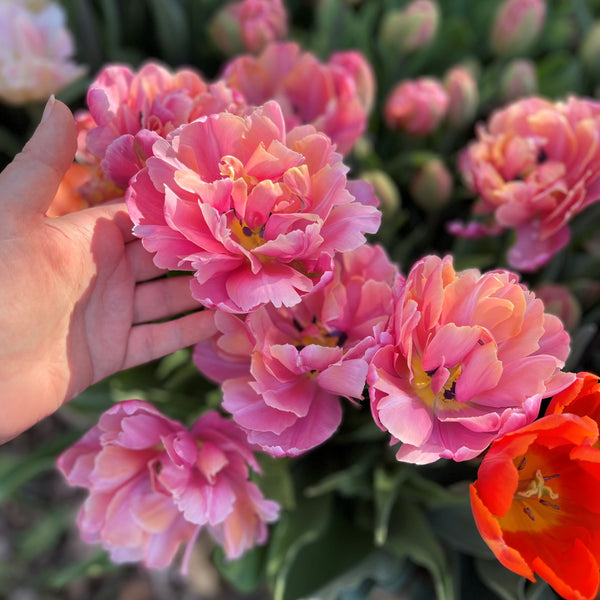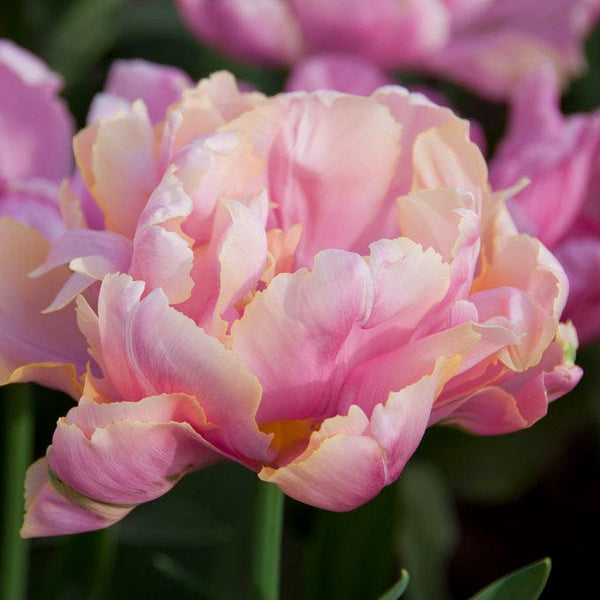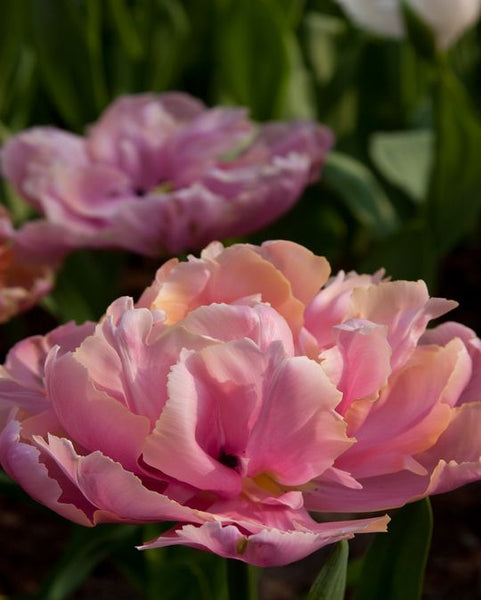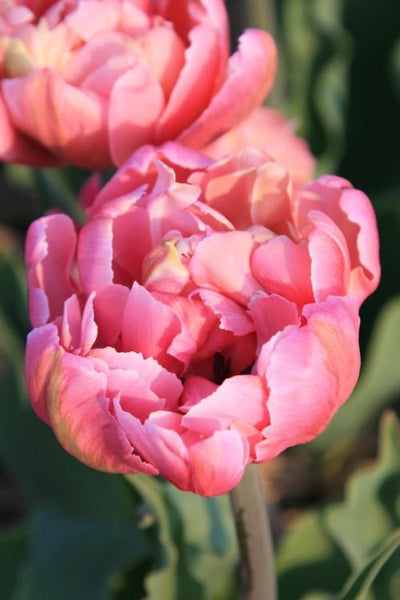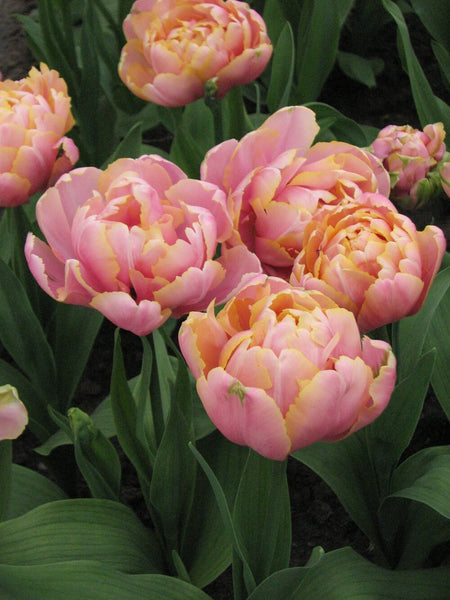Lily's Garden Store
Tulip ‘Pink Star’ (Late Spring) - 10 bulbs
Regular price
$18.99
Sale price
$22.00
Shipping calculated at checkout.
Admired for its beauty, Pink Star tulip Pink Star Tulip opens into a classy and sophisticated rose bloom with delicious apricot accents. As it matures, the colour-changing petals transition from soft pink to peach to champagne. A true discovery, this award-winning variety quickly became one of our absolute favorites.
Combine early, mid and late spring blooming tulips from our Fall Bulb Sale for an extended flower display!
Height: 16"
Tulip Class: Double
Bloom Time: Late Spring
Delivery time: October-November 2023
--
Tulip Growing Guide
Tulips are vibrant and popular spring-blooming flowers. Here are some tips on how to grow and care for tulips:
1. Planting time: Tulip bulbs should be planted in the fall, ideally 4-6 weeks before the ground freezes. This allows them to establish roots before winter and ensures they bloom in the following spring.
2. Soil preparation: Choose a planting location with well-draining soil. Tulips prefer soil that is fertile, loose, and rich in organic matter. If the soil is heavy or clay-like, amend it with compost or well-rotted manure to improve drainage.
3. Bulb planting: Plant tulip bulbs at a depth of approximately 6-8 inches (15-20 cm). The pointed end of the bulb should face upwards. Space the bulbs about 4-6 inches (10-15 cm) apart to allow for proper growth and air circulation.
4. Sunlight requirements: Tulips thrive in full sun to partial shade. Ensure the planting location receives at least 6 hours of direct sunlight each day to promote healthy growth and vibrant blooms.
5. Watering: Water the tulip bulbs thoroughly after planting to settle the soil around them. After that, tulips typically don't require regular watering unless there is a prolonged period of dryness. Once the foliage emerges in spring, provide occasional watering if there is a lack of rainfall.
6. Mulching: Apply a layer of mulch around the tulip bulbs after planting to help insulate the soil, retain moisture, and prevent weed growth. Use a light layer of organic mulch, such as straw or shredded leaves, but avoid piling it directly over the bulbs.
7. Fertilizing: Prior to planting the bulbs, you can amend the soil with a balanced slow-release fertilizer or bulb-specific fertilizer. Follow the package instructions for proper application rates. Alternatively, you can top-dress the soil with compost in the spring to provide nutrients as the tulips grow.
8. Protecting from pests: Tulip bulbs can be attractive to animals like squirrels and deer. To deter them, you can use deterrent sprays, plant tulips alongside less appetizing plants, or cover the planting area with netting or fine wire mesh until the bulbs are established.
9. Post-blooming care: Once the tulip flowers have faded, remove the spent blooms to prevent seed formation. Allow the foliage to die back naturally, as this process helps replenish the bulb for the following year's growth. Avoid cutting the foliage until it has turned yellow and withered.
10. Bulb storage: If you want to save the bulbs for replanting, carefully dig them up once the foliage has withered. Clean off any excess soil and store them in a cool, dry, and well-ventilated place until the next planting season.
By following these simple guidelines, you can enjoy a stunning display of tulips in your garden each spring. Remember that tulips are perennial, but their blooming potential may decline over the years. To maintain their vigor, consider replanting new bulbs every few years.






